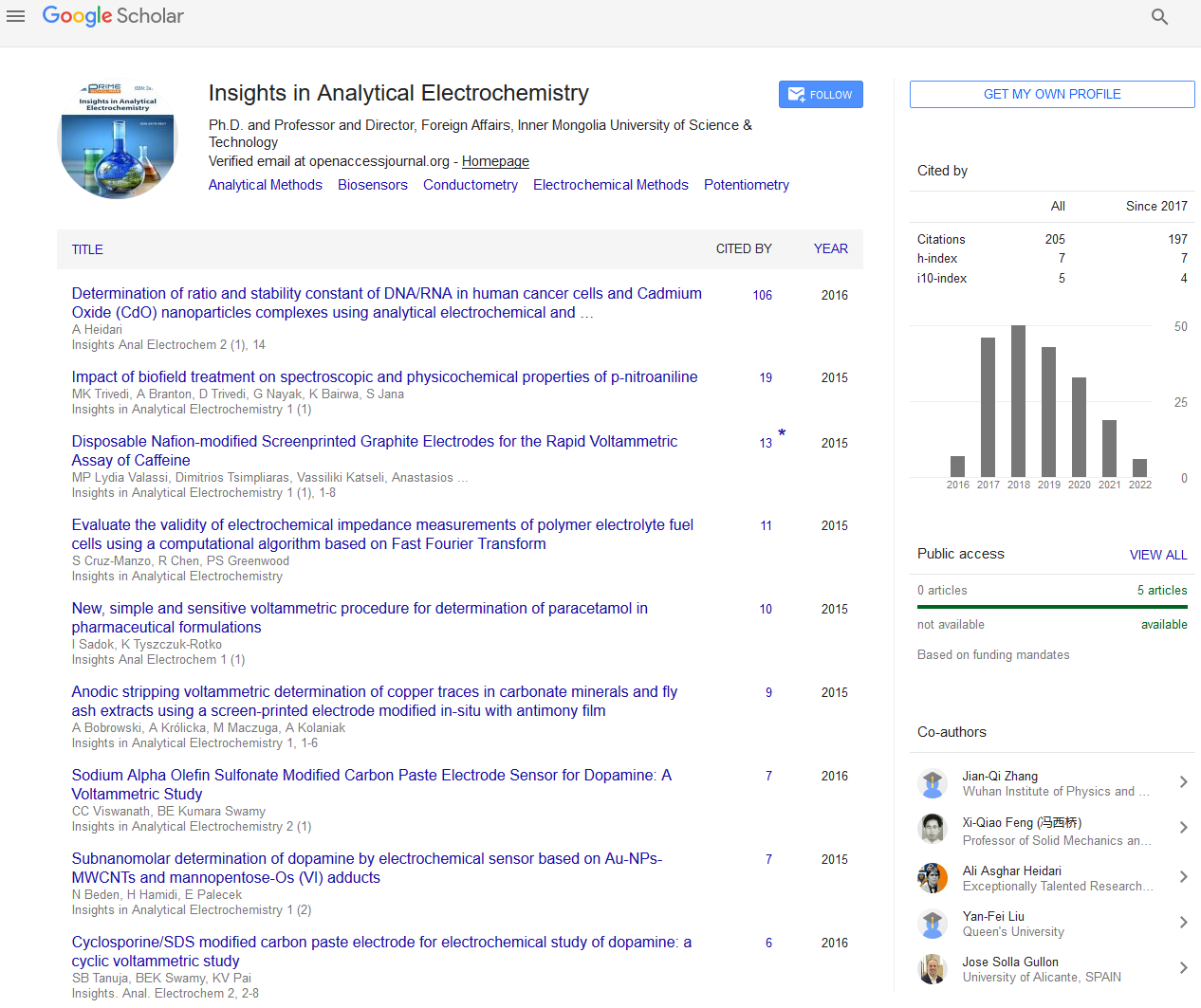Commentary - (2022) Volume 8, Issue 3
Advantages of Marine Snow in Chemotactic and Motile Bacteria
Ben Wright*
Department of Communication, University of Bristol, UK
*Correspondence:
Ben Wright, Department of Communication, University of Bristol,
UK,
Email:
Received: 02-May-2022, Manuscript No. ipaei -22- 13617;
Editor assigned: 04-May-2022, Pre QC No. ipaei -22- 13617 (PQ);
Reviewed: 18-May-2022, QC No. ipaei -22- 13617;
Revised: 23-May-2022, Manuscript No. ipaei -22- 13617 (R);
Published:
30-May-2022, DOI: 10.21767 / 2470-9867 - 8.3.12
Description
Particley natural carbon that hastens through seawater segments
is a significant interaction that directs the Earth’s environment
by segregating carbon in the air. The primary
colonization of marine particles by heterotrophic microbes
addresses the initial phase in reusing its carbon into inorganic
constituents, in this way deciding the degree of vertical carbon
transport into the pit. Here we tentatively show that bacterial
motility is expected for the advantages of molecule colonization
and chemotaxis, particularly at high sedimentation rates.
What’s more, we will explore the job of molecule ultrastructure
on the proficiency of colonization of microorganisms with
various active properties. Non-motile cells benefit excessively
from the permeable microstructure, underscoring the generally
bountiful molecule wake through chemotactic and proficient
molecule colonization by motile cells. Our outcomes benefit
from the high supplement accessibility when chemotactic and
motile microscopic organisms colonize particles, however the
expulsion of these cells is normal in tiny fish networks and is
non-nutritive and non-nutritive. It implies benefiting cells of
motility. Marine microorganisms depend on the defilement of
fleeting supplements from sinking marine particles, in light of
the fact that the sedimentation pace of the particles frequently
surpasses the swimming pace of the microbes, and the mathematically
transcendent marine microscopic organisms are
non-motile. , It is hard to stick to these designs. Addresses a
molecule food. Here we evaluate the significance of chemotaxis
and motility for productive colonization of marine particles,
and keeping in mind that chemotaxis gives clear advantages,
motility is the premise of molecule colonization. Find that it is a
necessity. Stretching out this examination to make sense of the
profoundly heterogeneous molecule structure, advance direct
contact with the molecule surface, and concentrate non-motile
microorganisms inside the supplement rich molecule crest of
non-motile cells. Track down uneven advantages.
Heterotrophic microorganisms assume a central part in marine biogeochemistry by reusing 48 disintegrated particulate natural
matter into inorganic constituents. The most plentiful bacterial
species in the marine climate are stable and, contingent upon
the dissemination motion, polish off genuinely uniform however
low convergences of disintegrated and awkward carbon in
mass water. Interestingly, in, particulate natural matter, for example,
phytoplankton total and waste pellets sinks through the
water segment, making an upward progression of carbon from
the surface blended layer to the void. This interaction, which
sequesters carbon in the air by photosynthesis of furthermore,
transports it to the inside of the sea and to silt, is known as the
natural carbon siphon and is a significant consider directing the
worldwide carbon pattern of the earth. .Contrasted with the
encompassing mass water, these particles have significant degrees
higher carbon and supplement focuses and can go about
as microbial areas of interest in supplement unfortunate marine
conditions.
Expanded metabolic action of the settling particles might advance
quick remineralization of natural matter during sedimentation
and eventually decide the productivity of the natural
carbon siphon. Molecule related microbial networks have been
demonstrated to be wealthy in quickly developing cooperative
microscopic organisms, which are typically connected with motility
and chemotactic conduct, not at all like the encompassing
free-living networks. Sea particles arrive in an assortment of
shapes and sizes. The destiny of these not entirely set in stone
by the elements of remineralization and the pace of sedimentation.
These are intricate capacities characterized by size,
shape, and overabundance thickness.
Acknowledgement
None.
Conflict of Interest
The author declares there is no conflict of interest in publishing
this article.
Citation: Wright B (2022) Advantages of Marine Snow in Chemotactic and Motile Bacteria. Insights Anal Electrochem. 8:12
Copyright: ©Wright B. This is an open-access article distributed under the terms of the Creative Commons Attribution License,
which permits unrestricted use, distribution, and reproduction in any medium, provided the original author and source are
credited.

